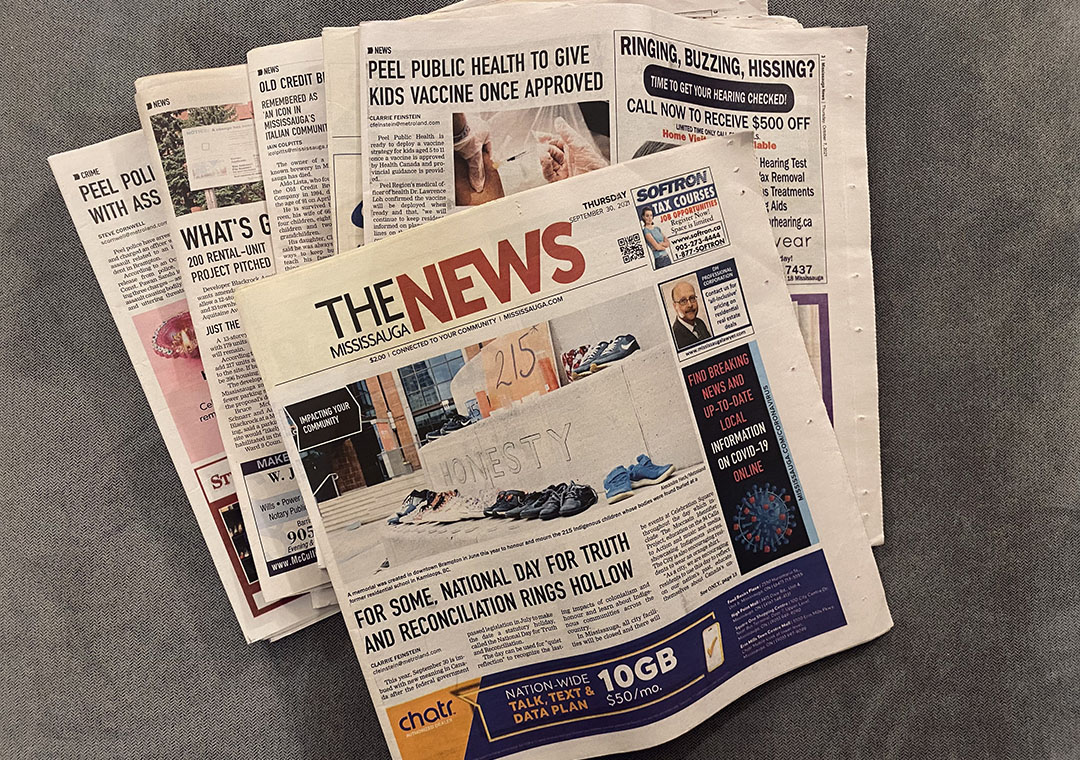In January 2020, the BBC’s coverage of the death of retired NBA player Kobe Bryant included footage of Lebron James. In 2018, the BBC broadcasted the wrong Pakistani cricket player, showing bowler Wasim Akram instead of his former teammate Imran Khan. It seems that one of the most globally known broadcasters made the same error twice — perhaps due to the lack of diversity in its newsroom.
In the age of globalization, information travels faster than ever and is just as important to deliver. Journalism has long been imperative for making sure people’s voices are heard equally. But what happens when the people telling the stories only do so from a limited perspective?
According to the American Press Institute, “journalism, in its truest form, should be produced for the benefit of all, not only those who wield a particular power, class or authority.” But it seems that straying away from this “truest form” may be inevitable. In 2021, The Canadian Association of Journalists released its newsroom diversity survey, which collected data from 209 newsrooms across the country. Results showed that 75 per cent of journalists in these newsrooms are white, and 80 per cent of newsrooms have no member of a visible minority or Indigenous person in a top leadership role.
The fact that newsrooms are highly saturated with white reporters means that most content is being viewed through a particular lens, even though it may not be the right one for the story. This reduces both sensitivity and accuracy in reporting — two extremely important factors that must be taken into account. The result is that minoritized and marginalized populations are not able to tell their own stories, leading to cycles of false narratives.
A prime example of this is racial profiling. With news outlets constantly portraying racialized people, particularly Black people, as living in poverty and being involved in crime, it’s no wonder these biases have become rooted in institutions like law enforcement. According to Travis L. Dixon, a communications professor at the University of Illinois, “This leaves people with the opinion that Black people are plagued with self-imposed dysfunction that creates family instability and therefore, all their problems.”
Not only does this form of reporting create stigma surrounding minoritized and marginalized populations, but it also does not bring to light the issues these communities face and prevents them from getting the resources they need.
According to Lonnae O’Neal, a senior writer for The Undefeated, “A typical white, male-centric newsroom means critical stories will continue to go unreported and news analysis will remain unbalanced” — so diversifying newsrooms is critical to the future of journalism as a whole. This diversification can result in coverage that represents the population it seeks to serve and journalism that brings true change by speaking for those whose voices have not been heard.
For instance, when NFL player Colin Kaepernick refused to stand for the national anthem, initial news reports framed it as a politically divisive move, whereas it was actually a call for justice over police violence against Black people. What was supposed to be an outcry for justice and an act of solidarity from an important figure was painted as a surface-level political display, drawing attention away from a serious issue that affects an entire population.
Furthermore, it was Steve Wyche, an African American reporter, who examined the situation from an appropriate lens and was able to determine the context of it. Hence, journalism at its best — with reporters from different backgrounds — can provide a platform for new and more accurate perspectives.
However, this does not only mean ‘diversity hiring.’ Systemic approaches need to be taken in order to uproot the structure of white, male-dominated spaces. This includes providing mentorship and creating spaces for aspiring minoritized journalists, from education to full-fledged careers.
These initiatives should also provide opportunities for minoritized journalists to move up the ladder. One such initiative is the Black Journalism Fellowship created by U of T’s Investigative Journalism Bureau and the Canadian Journalism Foundation (CJF), which will give Black journalists the opportunity to work for six months on investigative journalism projects with mentorship from senior staff. According to Natalie Turvey, the president and executive director of the CJF, this initiative seeks to “develop emerging investigative talent and make space for a range of voices and experiences from Canada’s diverse communities.”
With initiatives like this and commitments from organizations to represent who they serve, journalism as a whole can move toward working for a better world. In order to unearth the layers that cover people’s stories, we need reporters who have the perspectives to uncover them.
Urooba Shaikh is a first-year psychological and health sciences student at UTSC.


